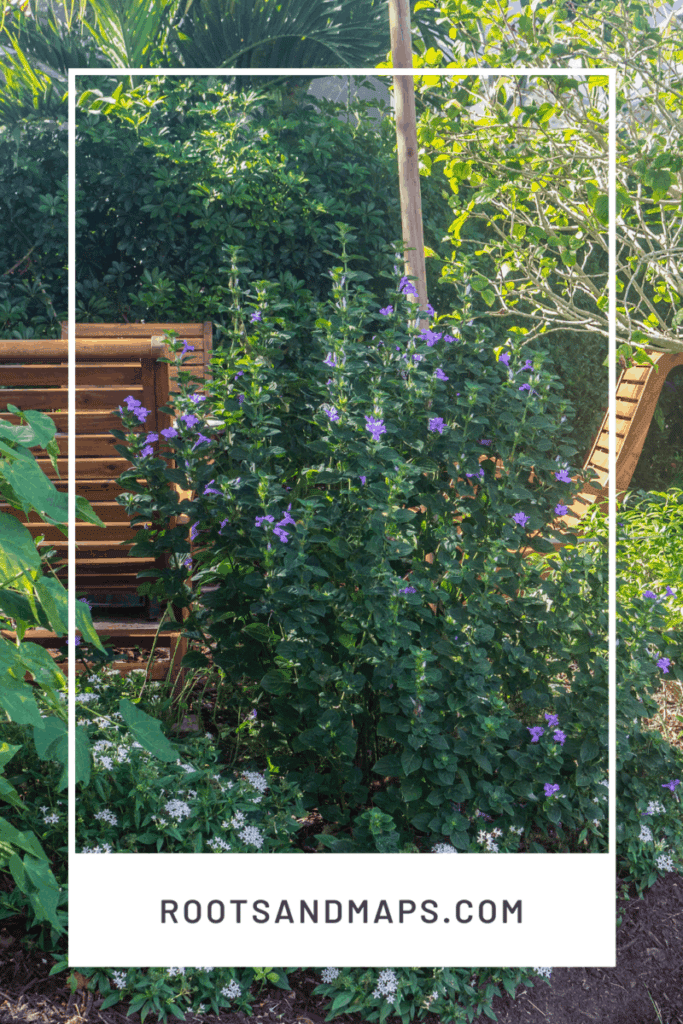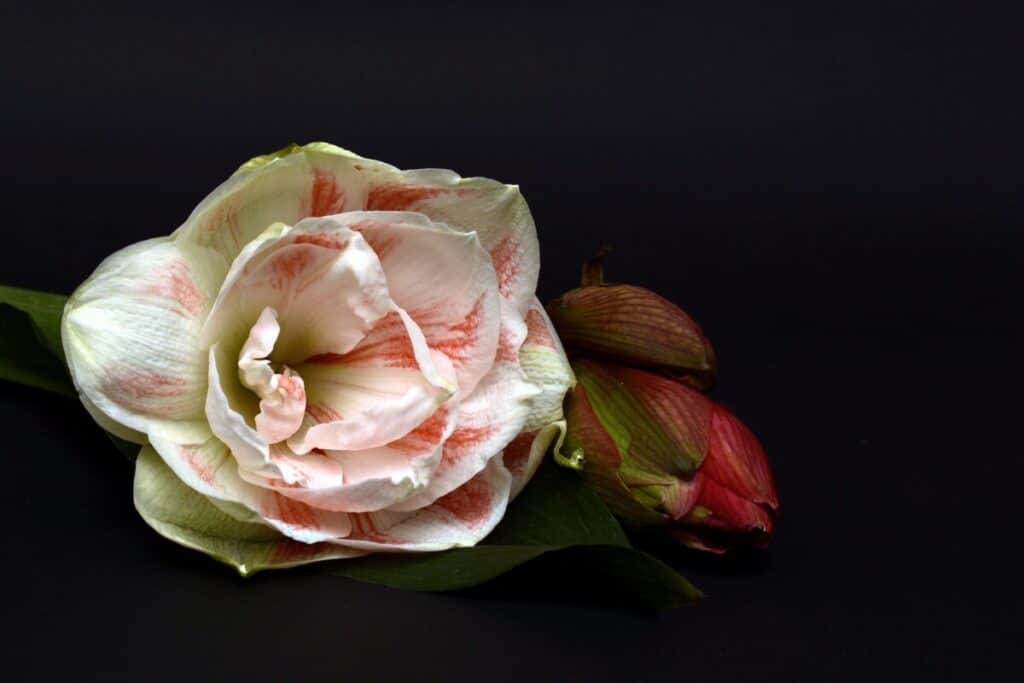Where The Year Ends-But Not The Garden!
During the month of December, in our sub-tropical, South Florida garden, the year is coming to an end but the garden keeps on growing. We don’t put this garden to bed! All of us, Floridians grow and eat our best vegetables over the next few months. New and exotic blooms come all around us as we trade in the pool for the fire pit at night.
Not Putting The Garden To Bed!
Did you grow up like me with this expression,” it’s time to put the garden to bed”?
Sleeping Gardens
In a temperate climate, wherever you dig; the garden gets ready to sleep about October and is under eiderdown by December. You will busy yourself with house plants and holidays and it’s time to forget the garden for a while! Then you will get itchy fingers about the first of February and the cycle will restart with the seed orders.
Here is some garden bedtime advice from the University of New Hampshire, where gardeners understand hungry winter birds and a somnolent garden bed.
Did You Grow Up With This Poem?
With a couplet for each month, the poem covers the whole year in the garden. Yes, Sara, a poet, and translator was the daughter of Samuel Taylor Coleridge. She grew up in a society of gardeners, nature lovers, and poets, Wordsworth was a neighbor.
“The Garden Year“
“Chill December brings the sleet,
Blazing fires, and Christmas treat”
-Sara Coleridge
Fishermen, Smugglers and Bars…
About the only place south of our garden where you will not get wet feet is Key West! It is the southernmost point of the contiguous United States and Ernest Hemmingway called it “The St Tropez of the Poor”. It was in “To Have And Have Not” that he talked about the boats, the bright fish, the water, the smugglers, and the bars. Lots of bars!
South Florida is 100 miles south of anyplace in Southern California and we dig and harvest about 187 miles from the Tropic of Cancer.
- In South Florida the garden never nods off and the bugs never die!
What’s In Bloom This Month?
Here is what we are looking at and caring for this month in the pondside garden.
Caladiums
The featured image at the start of this article is of some ethereal leaves of the tropical caladium bulb. We plant some early each spring. They are in color for us all of the warm months, however, we have discovered that in containers, in our zone 10a garden they last through most of the winter. They add wonderful daily color.
Here is the caladium story and how they work for us. In a temperate climate plant in spring for the garden and lift the corms to store all winter and reuse.
Two New Plants For An Update On The West Side
The Western side of the house was looking tired, old foundation plantings needed a refresh and we selected these two plants with both flowers and colorful foliage for the sunny spot.
The funnel-shaped, lavender blooms of the Philippine Violet were already in the garden and they are party central for hummingbirds. (Note the tubular bright blooms.) The second, a version of the cranberry hibiscus plant, we found at our annual garden show. We are both volunteer Master Gardeners and our group has operated this show for over 21 years. We have been involved for the last few.
Our vendors, all local farmers, bring new and surprising plants to us every year. There is always something we cannot resist. We bought a bunch of orchids, a group of the hibiscus, and a little kumquat tree. The kumquat is one we have raised before, the little fruits are flavorful themselves and make a lovely marmalade with their tart little skins.
-Phillipine Violet-Barleria cristata and Cranberry Hibiscus-Hibiscus acetosella

The Philippine Violet- Barleria cristata is a lovely shrub, featuring 1-2″ wide tubular, lavender blossoms which attract butterflies, hummingbirds, bees, and yes, us, to the garden. Native to a range of territory from South China to India and Myanmar, it is, despite the hyperbole of horticulture, neither Philippine nor a violet!
Use it as a hedge or windbreak, and it is remarkably easy to propagate from cuttings. Hardy in zone 9b-11, it is 24-36″ high and wide; it blooms throughout our winters. Find your hardiness zone. In cooler places, such as Texas, they cut it to the ground, and it winters over and reblooms in spring.
The original plant sits in the pollinator garden between the new seating area and the pond view. It is the result of the project to “find a low maintenance groundcover that we love and the rabbits do not.”
Cranberry Hibiscus-Hibiscus acetosella
A multi-stemmed shrub, it reaches 3-6′ (1-2m.) Its serrated leaves are deep magenta as is the blossom and its Hershey Kiss-like bud. Native to parts of Africa it is popular in warm climate gardens around the globe.
A New Border Added
It is new to us, and I will update our progress. So far we love the violet and magenta rows. We have planted 5 of each plant in alternate rows. In this climate with hot, wet summers we appreciate caladiums for daily color starting about March.
In front of these two shrubs, we will use a thick row of “Cranberry Star” caladiums. Their large, translucent, white heart-shaped leaves are dotted by cranberry dots. It should be nice.
Winter/Summer Annuals For Color
If you are back in your Florida winter home or here all year think of the colorful annual plants your mother and grandmother used. Right now you can plant them all-every one. In January, the coldest month you may have a cold night but this is the easiest time to start annuals.
Some well-started, humidity-resistant annuals will become short-term perennials. Pentas, vinca, torenia, and sometimes begonias will grow all next summer and longer.
If you love pansies, this is the time to enjoy them.
The Herb Garden
Our garden is smallish and herbs are delicious space savers. Florida winters are our best time for edibles and the herbs and vegetables are flourishing now.
Here is my list of culinary herbs and how to transition them from garden fork to kitchen fork. I hope you enjoy growing and cooking with them all.
| Plants | Names | References |
| Annuals | Salvia, coleus, torenia, celosia, vinca | https://gardeningsolutions.ifas.ufl.edu/plants/ornamentals/annual-flowers.html |
| Vegetables | Warm season varieties | http://edis.ifas.ufl.edu/pdffiles/vh/vh02100.pdf |
| Herbs | Many herbs | https://gardeningsolutions.ifas.ufl.edu/plants/edibles/vegetables/herbs.html |
| bulbs | Gladiolus, butterfly lily | |
| Palms | Summer is a good time to plant palms, brace the taller ones for6-8 months | https://gardeningsolutions.ifas.ufl.edu/care/planting/planting-palms.html |
What To Do This Month
As you see, this is a lovely month to be outdoors, but bugs are on the to-do list for one obvious reason. “They never close,” here, bugs don’t’ freeze or hibernate. They are always at work and pest control of one kind or another is always part of life. I read in surveys of homeowners that Florida is the worst state for bugs. I have not lived in every state, but it sounds right to me!
Reduce Pesticides
If you like to control the use of pesticides read this piece about the remarkable relationships between the tiny hoverfly and the sweet alyssum. It will make you want to use sweet alyssum in the vegetable garden.
Lawns In Florida
In Florida, the most commonly used turfgrass is called St Augustine. It’s that bouncy, blue-green, coarse-bladed grass that looks a lot like crabgrass to us, new transplants from anywhere to the north!
It suits both the soil and the weather patterns of a wide space. It is native to, and commonly found, from the Carolinas to Florida, west through the Gulf Coast to Texas and again in much of California.
In Our Cooler Months We Do This
If you are new to Florida or hoping to add a little place in the sun here is how we handle winter care of the turf. Now in December, the lawns are “semi-dormant,” and this means some care.
- We water and Feed,” lightly.”
- We mow the turf high and less frequently, In our neighborhood the schedule is every two weeks.
- We practice weed and bug control. “They never sleep.”
| Lawns | South Florida lawns are not really dormant during winter but are slow-growing. Learn about St Augustine, our most prevalent turf. | http://edis.ifas.ufl.edu/topic_turf_diseases |
| Irrigation | While evaporation is low in our cool season, rain is rare. Check your irrigation on a regular basis. Containers, window boxes, and hanging baskets benefit from drip systems. | https://gardeningsolutions.ifas.ufl.edu/care/irrigation/irrigation-pitfalls.html |
| Perennials | Divide and replant perennials-The best guide to Florida plant selection I can find, is to the right! | https://ffl.ifas.ufl.edu/pdf/FYN_Plant_Selection_Guide_2015.pdf |
| Insects | No, winter does not stop them around here. Here is an expert article. | http://blogs.ifas.ufl.edu/escambiaco/2014/10/28/insects-take-a-break-in-winter/ |
| Festive Seasonal Plants | Amaryllis, Pointsettia, etc. | https://www.countryliving.com/gardening/g3869/christmas-plants/ |
Preparing Your Christmas Plants
Amaryllis

Buy your bulbs from a reputable dealer. Try a specialist or large producer, and introduce yourself to the infinite variety of colors and shapes available. You work hard on your garden; do not limit yourself to” same old, same old.”
How To Plant The Bulbs
Here is how to plant them. Put your bulb, “Pointy side up” in good quality potting soil. leave about 1/3 of the bulb exposed, water sparingly and keep the bulb in indirect but bright light. Once you see 2″ of green new growth you can begin to keep it regularly watered.
The new plant will reach for the sun, so turn the pot every day or every other day. This will ensure a straight stem. To extend the life of your festive bloom, keep the plant away from direct sunlight. At 6-8 weeks from bulb to bloom, you just have time to buy and plant some by Christmas!
How to store the Amaryllis bulb to reuse.
Once the flower fades, cut the stem to 1/2″ above the bulb. Leave the foliage, which will provide the energy the bulb needs to rebloom. When the foliage begins to die back you can cut it short and store the bulb in a cool dry place. You can plant it in the garden for the summer.
Pointsettia
This joyful Christmas favorite is full of surprises. First, it is not the petite little plant you bought in the pot. In our climate (zones 9-11) we grow them outdoors. Native to tropical parts of Central and South America they grow foliage when the days are long and flowers when the days are short. We see why they are great for the holidays.
If You Plant It Outdoors In Florida After The Holidays
The plant needs about 10 feet in either direction when you plant it in the garden. The growers use growth regulators in order to keep it small, but it is not that at all. Here is an important point. The Pointsettia needs about 12 hours of darkness to set blooms for next year. Make sure to pick a dark location.
Summary,
Northern gardeners know that it’s a good idea to start putting the garden to bed early, and it saves labor next spring. In South Florida, we are 6 months from the next hurricane season. December is a great month to check trees for dead or damaged branches. Trees around here need to be in prime condition for our blowy summers.
Good luck and happy digging.
